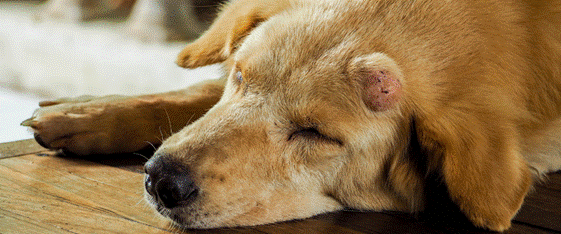Dog Cancer Threats and What You Can Do About Them
Dog cancer is a frightening disease that has reached epidemic proportions. Unfortunately, many people do not know the signs of cancer in dogs, and the disease is often not detected until it has progressed to advanced stages. However, with early detection, there are some things that owners of different breeds can be on the lookout for to help prevent this disease from progressing to life-threatening conditions.
It is important to note that cancer in dogs is different from cancer in humans. In humans, there is a common tendency for cancer to spread through the body’s lymphatic system and perhaps the esophagus and the lungs. The cells of the lymphatic system in dogs reproduce much slower than those in humans, so cancer will have a chance to develop over time. It is also important to note that most dogs with cancer are not experiencing fever, so unless the vet states otherwise there is no need to worry. There is an exception to this rule when some types of cancer are known to be associated with feline cancer and cats are more at risk.
Symptoms of Cancer in Dogs
Some of the symptoms of cancer in
dogs include abdominal swelling, difficulty breathing, and weakness. If any of
these symptoms are present in your dog, it is important to visit the vet for an
exam. The vet may perform a complete physical exam and take a complete blood
count to determine HCT resistance, blood chemistry, and serum chemistry. There
are several tests that can be performed to detect if cancer has spread or
not to help in determining the severity and progression of the disease.
Many times, dog owners will notice that their dog is lethargic, suffers from constant ear infections, and is losing hair. Other symptoms of advanced dog cancer include bone deformities, heartworm, a large appetite, and an inability to produce adequate amounts of body fluid. If you are seeing any of these symptoms, it is important to see the vet right away. A complete examination is always the first step when there is suspicion of potentially deadly dog disease. Sometimes, however, if cancer has only started spreading, treatment may not be required.
Veterinarians can spot early cancerous changes in animals and can often provide supportive care that will improve the quality of life of your pet. In most cases, treatment options include surgery, chemotherapy, and radiation therapy, depending on how far cancer has spread. These options can be expensive and have serious side effects. Fortunately, many veterinarians today offer natural therapies that reduce the risk of dogs developing cancer. These therapies may help prevent cancer in your beloved pet and may even slow the growth of the disease.
Cancer in dogs can be devastating
news for the whole family. Dogs can love us unconditionally and are a part of
our families forever. To protect them, we must be sure that we are informed
about all of the dog cancer threats and take proper precautions to protect
them. Early detection and treatment can make a huge difference in how well your
dog fares against this disease. Your loving pet deserves the best.
Moreover, one should take care of the
dog’s hygiene. If you feel it unpleasant to manage your pet’s waste, then hire
some pet waste removal services. They will manage it properly for
you and make proper hygiene for you and you’re pet to live in a clean and
green environment. Also, take a regular health checkup routine with the
veterinarian to make sure that everything is right with your pet. Making your
pet ill to the last stage or difficult levels makes it tough for the pet to
recover easily.
Original Source:
http://doocare.com/dog-cancer-threats-and-what-you-can-do-about-them/




Comments
Post a Comment